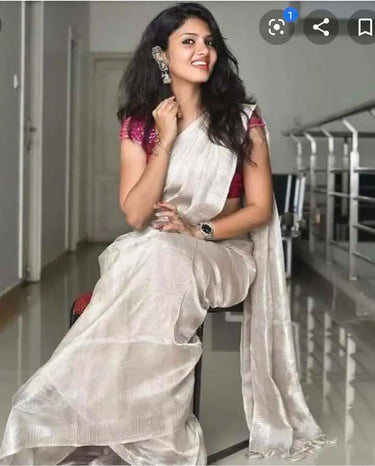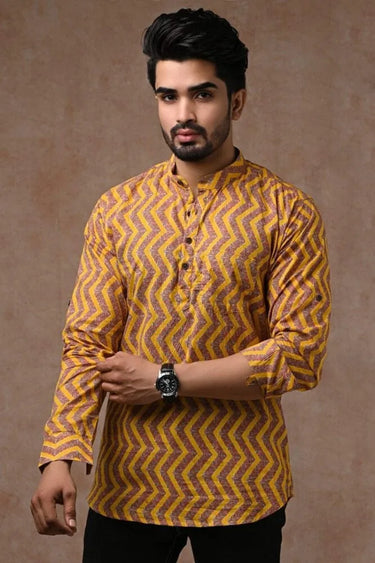Saree, Gagampang, Sabai, and Sampot: A Cultural Weave of Southeast Asian Elegance

South and Southeast Asia share a rich heritage of wrapped, draped garments – from India’s iconic saree to Indonesia’s ancient gagampang, Thailand’s graceful sabai, and Cambodia’s stately sampot. These attires are more than fabric; they are symbols of cultural identity and history. Each style reflects local craftsmanship, climate and customs, yet intriguing similarities hint at centuries of contact and exchange. In this article we’ll journey through their distinctive features, common roots, and revival on modern runways, weaving together history with style.
A Cross-Cultural Fashion Tale: How These Attires Propagated Beyond Borders
Imagine ancient trade routes buzzing with merchants, monks, and royals exchanging not
just spices and silks, but ideas and styles. Thats how the draped attire tradition spread from the Indian subcontinent to Southeast Asia. Starting with the saree in India, which has roots dating back over 5,000 years to the Indus Valley Civilization, this unstitched wonder influenced similar garments as Hinduism, Buddhism, and Indian culture traveled eastward.
From India to Indonesia: The gagampang, a Javanese draped ensemble from the Majapahit Empire (13th-16th centuries), echoes the saree's fluidity with its scarf-like upper wrap and lower cloth. Indian influences arrived via Hindu-Buddhist kingdoms, blending with local Javanese aesthetics.
To Thailand and Cambodia: The sabai (or sbai in Khmer) and sampot evolved in the
Khmer Empire (9th-15th centuries), inspired by Indian sari styles during the Funan era (1st century AD). Khmer influence then shaped Thai versions, especially after cultural exchanges between the Angkor and Ayutthaya kingdoms.
Threads of Tradition: The Heritage of Traditional
Draped Attires
Each of these garments carries the weight of history, symbolizing cultural identity,
social status, and even spiritual beliefs. Let's break them down one by one, shall we?
The Indian Saree: A Tapestry of Tradition
The Indian Saree (or sari) is arguably the region’s most celebrated drape. The word “saree” comes from Sanskrit for “strip of cloth,” and it has been worn for thousands of years. The first mention of a garment like the saree appears in the Rig Veda (around 3000 BCE), and sculptural evidence shows unstitched drapes on women from the 1st–6th centuries CE. Even today, the saree is a living tradition across South Asia.
The saree’s allure lies in its variety and craftsmanship. India’s 30+ regional saree traditions use everything from cotton and silk to gold and silver threads. For example, Varanasi (Banaras) in North India is famed for its Banarasi silk sarees – often brilliant red and richly woven with zari motifs, prized by brides. In contrast, Kerala in the south is known for simple white-and-gold kasavu mundu sarees. In West Bengal, Baluchari sarees showcase mythological scenes woven in silk. Every sari tells a story of its region, from Gujarati Bandhani tie-dye to Chanderi weaves of Madhya Pradesh.
The Saree is more than just a six-to-nine-yard piece of fabric; it's an emotion for millions of women in India. Its origins are ancient, with historical evidence suggesting its existence in the Indus Valley Civilization. The Saree's draping styles vary widely across India, reflecting the diverse cultures of different states. From the Nivi drape of Andhra Pradesh to the Bengali Atpoure style, each method is a testament to regional identity.
This 5-9 yard unstitched fabric is draped around the body, paired with a blouse (choli) and petticoat. Its heritage traces back to ancient texts like the Vedas, where it represented purity and prosperity. In Indian culture, sarees vary by region: Banarasi for weddings, Kanjeevaram for South Indian rituals, or cotton ones for everyday wear. It's more than clothing, embodying grace and versatility.
Modern Saree Styles: In recent years the saree has been reimagined with fashion-forward twists. Designers are playing with unconventional fabrics like denim, experimenting with pre-stitched sarees, and styling them with belts, jackets, and sneakers. Celebrities like Deepika Padukone rock them at Cannes, proving the saree is both timeless and contemporary.
The Gagampang: Indonesia’s Ancient Draped Ensemble
In Indonesia, an ancient draped style often called Gagampang (from the Majapahit era, 13th–15th centuries CE) has similarities to other regional wraps. It is described in local tradition as a two-piece outfit: a wrapped cloth (kain) around the body, paired with a shoulder sash. This resembles the Javanese kemben – a tight, shoulder-baring breast cloth – which was the most common women’s dress in classical Java. Temple reliefs and manuscripts show nearly all women wearing kemben-style drapes over the chest. By colonial times, European influences and the rise of the kebaya blouse largely replaced the kemben, but it survives today in ritual dances and palace ceremonies.
The outfit likely consisted of a kemben-like torso wrap plus an angkin or selendang (shawl). Although detailed records are sparse, its form hints at broader Indian Ocean fashions. Indonesian draped skirts (sarongs, batik kain) and brocaded shawls had long been influenced by earlier trade (see Shared Heritage below). Today the essence of Gagampang lives on in traditional performances: dancers and festival queens sometimes wear Majapahit-inspired drapes reminiscent of these ancient styles. Notably, the bare-shouldered kemben is regarded as elegant but has been debated in modern times for modesty; it remains most visible in royal courts (Yogyakarta, Surakarta) and in cultural preservation efforts.
The Gagampang, hailing from Java's Majapahit era, is a noblewoman's attire consisting of a scarf-like upper wrap (similar to a dupatta) and a lower cloth draped around the hips and legs. It symbolized elegance in royal courts, influenced by Hindu epics like the Ramayana. Today, it's a reminder of Indonesia's pre-Islamic heritage, often recreated for cultural festivals.
The Gagampang is also a traditional garment from the Sasak people of Lombok, Indonesia. It is a type of sarong, often worn by men and women during traditional ceremonies. While its draping is distinct from a Saree, the idea of wrapping a piece of cloth around the body to create a graceful silhouette is a shared principle.
The Sabai: Thailand’s Graceful Shawl
The Sabai (Thai: สไบ sabai; Khmer/Lao: sbai or pha biang) is a graceful one-shoulder shawl or breast cloth used across Southeast Asia. The sabai was derived from the Indian sari: “the sbai was derived from the Indian sari, the end of which is worn over one shoulder.” Historically, Thai and Khmer women draped a sabai over one shoulder, leaving the other arm bare, as part of ceremonial dress. In Cambodia and Laos the sbai similarly functioned as an elegant sash.
The sabai is a shawl-like wrap worn over one shoulder to cover the breasts, typically paired with a lower skirt. Rooted in Thai royal traditions from the Ayutthaya period (14th-18th centuries), it draws from Khmer styles and signifies modesty and poise. In Thai culture, it's essential for ceremonies, dances, and weddings.
The Sabai is also known for its elegance in traditional Thai dance costumes and formal wear. The way it is draped over one shoulder and across the chest creates a look that is both modest and incredibly graceful.
In recent decades, Thailand has actively revived its silk traditions that support the sabai. Queen Sirikit’s SUPPORT Foundation promotes handwoven Thai silk and regularly features them in fashion shows. Designers today combine the sabai concept with contemporary fashion: silk sabai wraps, embroidered stoles, and hybrid “Thai-fusion” tops appear on runways and in Thai-centered fashion events.
The Sampot: Cambodia’s Classic Wrap
Cambodia’s Sampot (Khmer: សំពត់) is the country’s traditional lower garment and is
analogous to the Indian dhoti or the Malay sarong. Historical records trace the sampot back to the Funan era (around the 1st–6th century CE). Cambodian bas-reliefs and the writings of Chinese visitors show sampot wraps on kings and commoners alike. As the UNESCO description notes, the Khmer word sampot literally means “cloth” – reflecting how fundamental the wrap is to Khmer culture.
The sampot is a versatile wrap-around skirt, often pleated and tucked, worn by both men
and women in ancient Khmer society. Dating back to the Funan Kingdom (1st-6th centuries), it was mandated by royal decree for modesty. In Cambodian heritage, it represents resilience and artistry, especially in Apsara dance costumes. The sampot is similar to the Indian lungi or dhoti, Burmese longyi, and the Malay/Indonesian sarong. Traditionally it was woven from local silk and cotton. Sampots often bear geometric or floral patterns, and certain versions (like sampot chang kben) are tied in a knot or pleated for formal wear. Traditionally, richly woven silk sampots were worn at weddings, temple ceremonies, and funerals.
After centuries of turmoil, the sampot has seen a modern resurgence. Today Cambodia’s
fashion designers celebrate the sampot and Khmer silk. Designers reinterpret ancient styles with a contemporary twist, bringing sampot-inspired dresses back into vogue.
Internationally, labels may feature sampot fabrics as skirts or garments, and
museums/stores in Phnom Penh showcase silk sampot lengths.
Shared Roots and Historical Connections
Despite regional differences, these four garments share common threads. Historically, South and Southeast Asia were linked by Indianized kingdoms and maritime trade, which spread fabrics and styles across the region. From around 200 BCE to the 15th century, Hindu-Buddhist culture and goods traveled by sea, influencing local dress.
The historical connection between these garments is a fascinating tale of trade, migration, and cultural exchange. Ancient trade routes, particularly the maritime silk road, played a crucial role in the dissemination of ideas, including fashion.
There is a strong historical and cultural connection between India and Southeast Asia,
particularly due to the "Indianization" of the region. This influence, which began over two millennia ago, brought Hindu-Buddhist traditions, art, and administrative systems to kingdoms in what are now modern-day Cambodia, Thailand, and Indonesia. The concept of draping unstitched cloth to create garments is a shared legacy that can be traced back to this era of cultural exchange.
Indian Roots and Spread: The saree's draped style influenced Southeast Asia through ancient maritime trade and the spread of Hinduism/Buddhism. By the 1st century AD, during Cambodia's Funan era, Indian envoys and merchants introduced sari-like wraps, which evolved into the sbai (sabai) and sampot.
Khmer-Thai Exchanges: The Khmer Empire's sampot and sbai directly shaped Thai sabai, especially after the 13th-century fall of Angkor, when Khmer artisans migrated to Thailand.
Javanese Parallels: The gagampang shows clear Indian influences via Majapahit's Hindu-Buddhist era, with similarities in draping techniques to the saree.
Comparing Traditional Draped Attires
Draping Style:
- Saree: Wrapped around the waist, pleated at the front, with the pallu over the shoulder.
- Gagampang: Upper scarf over the torso, lower cloth wrapped like a sarong.
- Sabai: Shawl thrown over one shoulder with a lower skirt.
- Sampot: Folded and tucked at the waist, sometimes like trousers (chong kben style).
Cultural Significance:
- Saree, Auspicious for Indian weddings and other festive celebrations. The saree symbolizes India’s heritage, blending tradition, femininity, culture, and identity; it unites regional diversity through timeless elegance and grace.
- Gagampang, Royal Javanese heritage. Gagampang in Java symbolizes harmony, humility, and communal unity; it reflects Javanese philosophy of balance, respect, simplicity, and cultural resilience.
- Sabai, Thai modesty in ceremonies. Sabai in Thailand signifies elegance, modesty, and tradition; it embodies cultural pride, feminine grace, spiritual respect, and continuity of Thai heritage.
- Sampot, Khmer identity in dances. Sampot in Cambodia symbolizes Khmer identity, dignity, and heritage; it reflects social status, tradition, artistry, spirituality, and cultural continuity across generations.
Materials and Motifs:
- Common: Silk or cotton with nature-inspired designs.
- Unique: Sarees with gold zari; gagampang with batik; sabai with metallic threads; sampot with ikat patterns.
Contemporary Revival and Modern Styling
Today all four garments enjoy a modern renaissance. In India, young fashionistas are mixing sarees with blouses in new prints and fabrics, even pairing them with sneakers or jackets for fusion looks. Sustainable, handloom sarees are being championed by designers and influencers , reviving fading weaving communities.
Saree: Traditionally pleated with a blouse, today it's pre-stitched for ease, paired with crop tops or jackets. Revival trends include sustainable organic cotton sarees and fusion like saree-gowns. Celebrities rock them at Cannes, making the saree global. Modern sarees are all about experimentation. We see designers playing with unconventional fabrics like denim, experimenting with pre-stitched or ;concept" sarees, and styling them with belts, jackets, and even sneakers. The classic elegance of a Banarasi silk saree or the vibrant hues of a Kanchipuram silk are now being paired with off-shoulder blouses and minimalist jewelry, making the Saree a go-to choice for red carpets and cocktail parties.
Gagampang: Revived in Indonesian fashion weeks, styled with modern blouses or as beach wraps. Batik-printed versions blend heritage with casual chic.
Sabai: In Thailand, it's fused with Western elements for weddings—think sabai over a strapless dress. Revival includes eco-friendly silks for sustainable fashion. Also, the Thai royal family’s silk foundations and annual fashion events showcase sabai-inspired garments on global runways.
Sampot: Cambodian designers mix it with lace or French tailoring for elegant gowns.
Modern trends feature chong kben as wide-leg pants for everyday wear. Designers like
Romyda Keth blend sampot fabrics into contemporary gowns, while export boutiques sell
aspara-inspired scarves and wraps.
Across the region, fusion trends often use these traditional cloths or draping methods in
creative ways. Whether worn in festival processions or reinterpreted on the catwalk, the
saree, gagampang (kemben), sabai, and sampot continue to weave together past and
present, tradition and trend.
Conclusion
Whether it's the timeless grace of the saree, the cultural richness of the gagampang, the delicate elegance of the sabai, or the historical flair of the sampot, each of these garments is a beautiful testament to the enduring legacy of draped fashion. They remind us that while cultures may be distinct, there is a shared thread of artistry and tradition that binds us all.
Thank you for joining me on this weave of wonder, dear friends. Let's celebrate the diversity of Asian fashion—it's what makes our world so vibrant.
Why Choose Aakritee for Your Ethnic Wear Needs?
Experience Unmatched Quality and Exceptional Customer Service at Aakritee
Editor’s Picks
Saree Pure Handloom Revival Baluchari Bishnupuri Silk Traditional Festive Durga Pujo Exclusive Premium Medium Orchid S10983 Medium Orchid
- $335.00 AUD
- $335.00 AUD
- Unit price
- / per
-
Medium Orchid
Saree Pure Handloom Revival Baluchari Bishnupuri Silk Traditional Festive Durga Pujo Exclusive Premium Maroon S10985 Maroon
- $335.00 AUD
- $335.00 AUD
- Unit price
- / per
-
Maroon
Saree Pure Handloom Revival Baluchari Bishnupuri Silk Traditional Festive Durga Pujo Exclusive Premium Navy S10984 Navy
- $335.00 AUD
- $335.00 AUD
- Unit price
- / per
-
Navy
Saree Pure Handloom Revival Baluchari Bishnupuri Silk Traditional Festive Durga Pujo Exclusive Premium Teal S10986 Teal
- $335.00 AUD
- $335.00 AUD
- Unit price
- / per
-
Teal
Saree Handloom Silk Gadwal Pale Goldenrod Festive Traditional Durga Pujo S10956 Pale Goldenrod
- $285.00 AUD
- $285.00 AUD
- Unit price
- / per
-
Pale Goldenrod
























